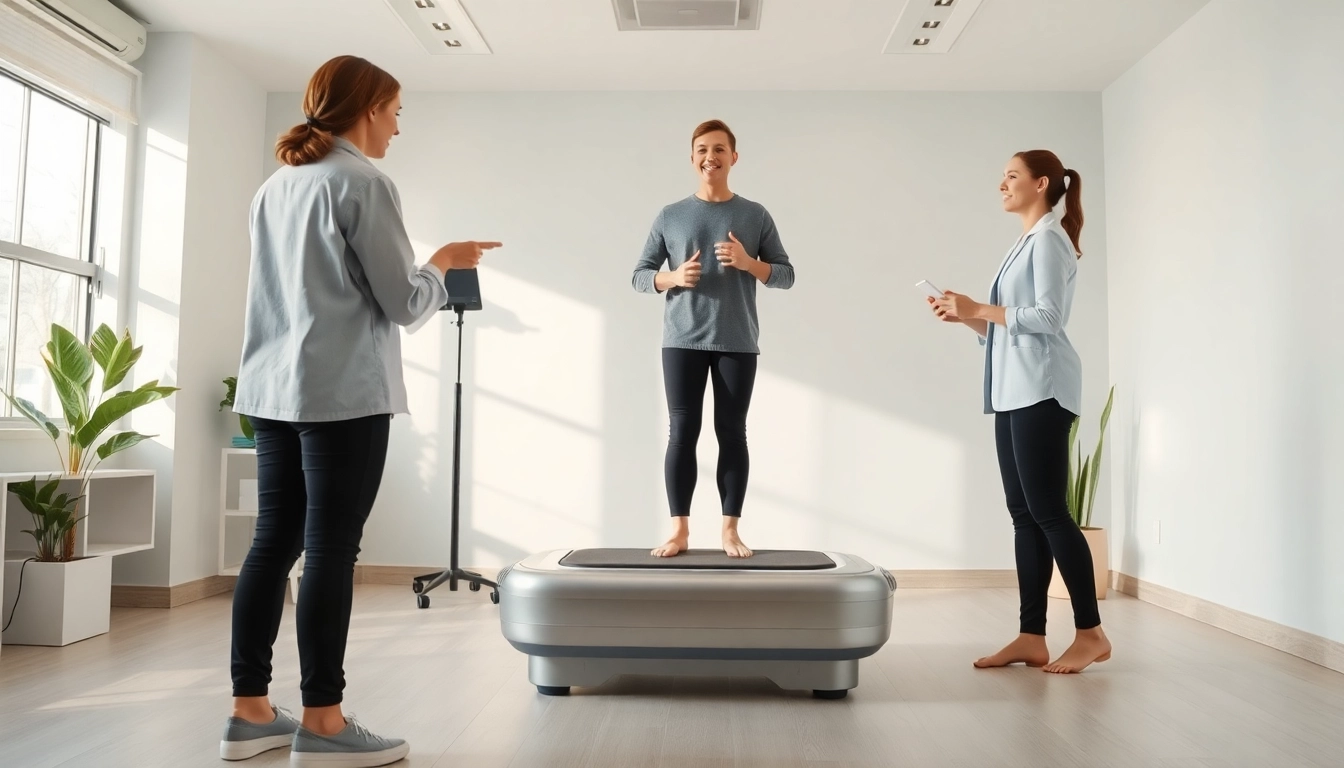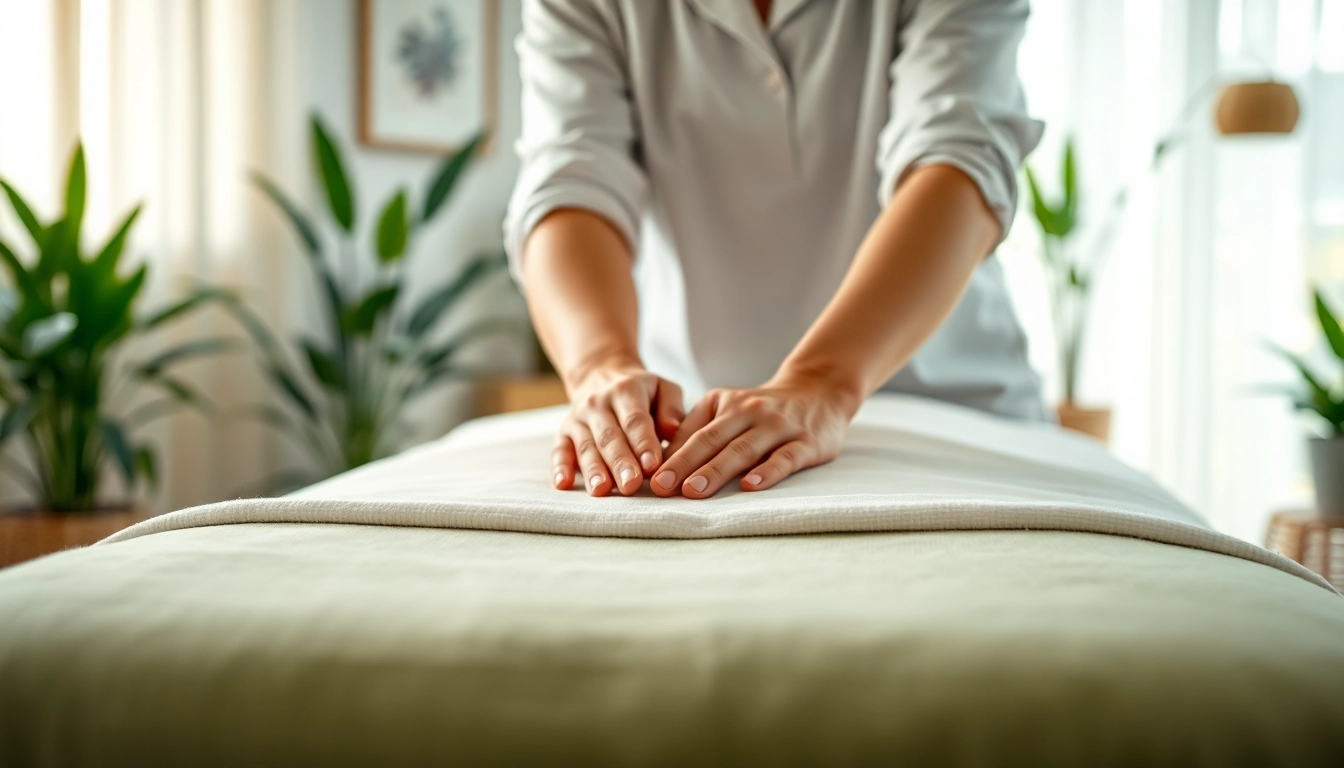Understanding Whole Body Vibration Therapy
What is Whole Body Vibration Therapy?
Whole body vibration therapy (WBV) is a form of exercise where users stand, sit, or lie on a platform that vibrates, transmitting mechanical energy to the body. This energy forces muscles to contract and relax multiple times per second, effectively simulating the effects of exercise without requiring the body to move significantly. Used for various therapeutic and fitness purposes, WBV has been integrated into numerous health and wellness routines for its potential benefits. Many therapists and fitness experts advocate for whole body vibration therapy due to its unique method of enhancing physical fitness alongside traditional methods.
The Science Behind It: Mechanisms of Action
The underlying science of WBV involves the principles of mechanical oscillation and kinetic energy transfer. When an individual stands on the vibrating platform, the vibrational motion travels through the body, prompting a response in the muscles, similar to that experienced during voluntary exercise. Studies have shown that these vibrations can activate muscle contractions at a significantly greater frequency than voluntary contractions, which can enhance muscle performance, improve strength, and stimulate metabolism. Furthermore, WBV can lead to increased blood circulation, improved flexibility, and enhanced range of motion, thereby supporting overall physical health.
Common Uses in Health and Wellness
Whole body vibration therapy is used in various contexts — including physical rehabilitation, fitness training, and wellness enhancement. Among its many applications are:
- Rehabilitation: WBV is utilized in rehabilitation settings for patients recovering from surgeries or injuries to facilitate quicker recovery and restore functionality.
- Muscle Strengthening: Athletes often use WBV as part of their training regimen to enhance muscular development and performance without excessively straining their bodies.
- Bone Health: Health professionals may prescribe WBV to improve bone density, particularly in older adults at risk of osteoporosis.
- Fitness Enhancement: Many fitness enthusiasts employ WBV sessions to maximize workout efficiency, often using the technology in combination with traditional exercises.
Benefits of Whole Body Vibration Therapy
Physical Health Benefits: Strength and Flexibility
Whole body vibration therapy offers a myriad of physical health benefits that can support individuals in various wellness journeys. One of the most significant advantages is improved muscle strength. Research indicates that WBV can increase muscular performance by stimulating fast-twitch muscle fibers, which are crucial for strength and power.
In addition to strength, WBV has been shown to enhance flexibility and range of motion. Participants utilizing this therapy often report an increased ability to perform stretches and maintain fluidity in movement. Flexibility is essential for preventing injuries and enhancing functional fitness, making WBV a beneficial addition to any exercise regime.
Mental Health Benefits: Stress Relief and Relaxation
Beyond its physical benefits, whole body vibration therapy provides notable mental health advantages. The rhythmic vibrations help stimulate the release of endorphins, which can improve mood and reduce stress levels. Many users describe feelings of relaxation and wave-like comfort during and after sessions, which can aid in managing anxiety and depression.
Furthermore, WBV engages the nervous system positively, allowing individuals to focus on their bodily sensations, promoting a meditative state during therapy. This integrative approach to mind and body wellness is crucial as mental health becomes increasingly recognized for its impact on overall health.
Potential Risks and Considerations
While whole body vibration therapy offers numerous benefits, it’s essential to consider potential risks. Individuals with certain health conditions, such as those involving cardiovascular problems, muscle disorders, or fractures, should consult healthcare professionals before engaging in WBV.
Additionally, improper use of WBV machines — including excessive duration or intensity — can lead to muscle soreness or injury. It’s important for users to start slow, adapt gradually, and ensure correct techniques and postures while using vibration platforms.
How to Incorporate Whole Body Vibration Therapy into Your Routine
Selecting the Right Equipment for Home Use
When considering the incorporation of WBV into your routine, selecting the appropriate equipment is pivotal. Various models are available in the market, with differing features, including oscillation type, frequency range, and weight capacity. For home users, it’s advisable to choose a reliable platform that meets personal fitness goals and comfort.
Look for machines equipped with adjustable settings to vary the intensity of vibrations and ensure a balanced workout. Platforms that also come with educational material or guided programs can enhance the user experience, helping beginners adapt effectively.
Recommended Practices for Optimal Results
To maximize the benefits of whole body vibration therapy, adhering to recommended practices is crucial. Here are key strategies:
- Set a Routine: Aim for consistent sessions, starting with 10-15 minutes a couple of times per week to establish a baseline, then gradually increasing duration and frequency.
- Combine with Stretching: Incorporating flexibility exercises before and after WBV sessions can enhance effectiveness and help prevent injuries.
- Focus on Posture: Maintain correct alignment during use to minimize risk and maximize the effectiveness of each session.
- Stay Hydrated: As with any physical activity, proper hydration is essential to support optimal performance and recovery.
Combining with Other Workouts and Therapies
Whole body vibration therapy pairs well with traditional fitness routines, such as strength training and cardio exercises. Incorporating WBV between sets or after workouts can optimize muscle recovery and enhance overall physical performance.
Additionally, pairing WBV with other therapies—such as yoga, Pilates, and physical therapy—can offer a comprehensive wellness approach. For instance, using WBV to supplement stretching or conditioning in yoga can amplify flexibility gains while providing a core-strengthening benefit.
Personal Experiences and Testimonials
User Feedback: Success Stories
Anecdotal evidence from users showcases a range of success stories associated with whole body vibration therapy. Many individuals report significant improvements in strength, mobility, and overall physical function. One enthusiast shared their experience of overcoming chronic back pain, stating that regular WBV sessions significantly alleviated discomfort, enabling a return to more active pursuits.
Additionally, fitness enthusiasts often express how WBV played a supplemental role in their training regimens, with improvements in performance metrics, including power output during competitive sports.
Case Studies and Research Findings
A growing body of research supports the efficacy of whole body vibration therapy across various demographics. For example, clinical studies have highlighted its positive effects on postural control and balance in elderly patients, potentially lowering fall risk.
Other research indicates the therapy’s role in accelerating recovery post-surgery, with patients experiencing enhanced neuromuscular function and reduced time to return to standard activities. Such findings validate the therapeutic promises of WBV and underline its potential within clinical settings.
Expert Opinions on Whole Body Vibration Therapy
Insights from health and wellness professionals also reinforce the value of whole body vibration therapy. Experts argue that when used properly, WBV can offer significant advantages, especially for populations with limited mobility or who require modified forms of exercise.
Experts advocate integrating WBV with comprehensive wellness strategies focused on diet, exercise, and mental health, offering a holistic approach to health that can empower individuals seeking improved well-being.
Future of Whole Body Vibration Therapy
Emerging Trends and Innovations
The future of whole body vibration therapy is bright, driven by ongoing research and technological innovations. Emerging trends include the development of smarter machines equipped with advanced biofeedback features, which provide real-time data on performance, postural alignment, and muscle engagement.
Furthermore, the incorporation of apps and virtual training sessions allows users to access dedicated programs tailored to their personal fitness goals, enhancing adherence and engagement with the therapy.
Research and Development Opportunities
Continuous research into the mechanisms and effects of WBV will likely unveil additional therapeutic benefits and applications in various clinical and athletic settings. Areas for future exploration include the impact of specific vibration frequencies on muscle recovery, anxiety reduction, and overall mobility enhancement in different populations.
Additionally, multi-disciplinary studies could provide insights into how WBV interacts with other therapies, reinforcing its position as an integrative tool in holistic health approaches.
How to Stay Informed on Best Practices
Keeping up with the latest advancements in whole body vibration therapy involves utilizing various resources, including peer-reviewed journals, professional organizations, and workshops. Engaging with communities focused on health and wellness can provide valuable insights and support for those looking to incorporate WBV effectively into their routines.
Regularly attending seminars led by experts and participating in workshops will not only enhance personal understanding but also provide updates on emerging trends and best practices within the vibrant field of whole body vibration therapy.



